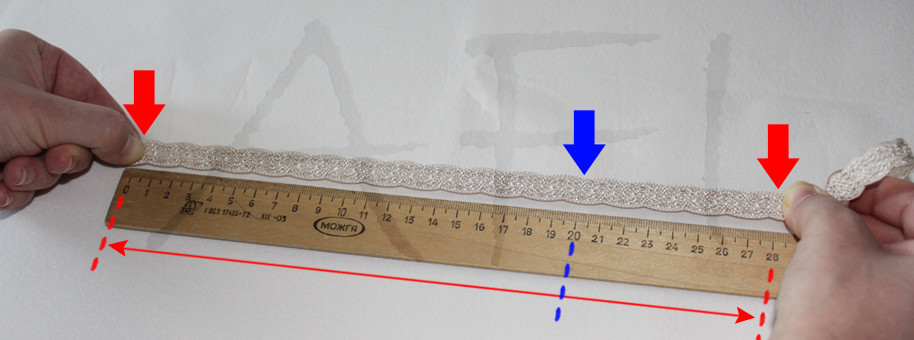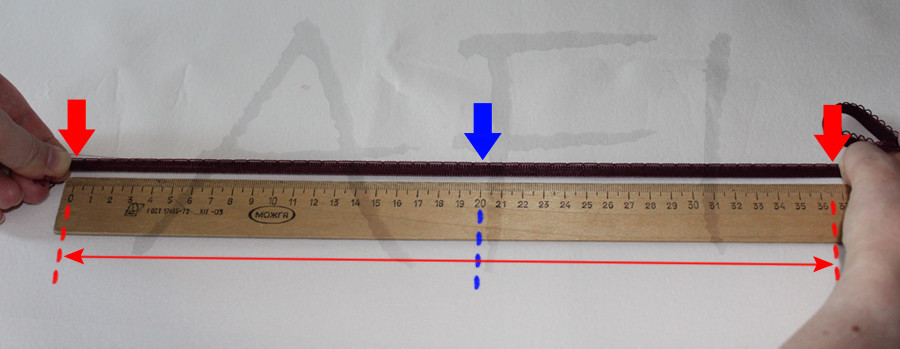
Sewing patterns that use elastics must specify the stretch amount for them. Also, if the pattern uses different types of elastics, for each type of elastics, the pattern instruction may specify the stretch amount.
Stretch factor for an elastic means how much that elastic can stretch.
Elastics have a length and a width. Elastics stretch in the length direction. The Stretch amount is measured on elastic’s length only. The width of elastics varies: thin elastics are used for panties. Wider elastics are used for bras. Even wider – for waistbands, etc. For lingerie elastics, usually, if the width of the elastic grows, the stretch amount decreases – but this is not a rule!
How to determine the stretch factor for our elastic?
The percentage
- Take a segment of 20 cm long of our elastic – do not stretch. The end of the segment is marked by our thumbs.
- The hand with the thumb pointing at 0 (zero) will remain still
- Stretch the elastic pulling only the right hand
- Stretch as much as the elastic allows, do not pull to rip it!
- Note the value where our right thumb is pointing
- Look for your value in the table bellow and see what your elastic stretch factor is.
| HOW MUCH YOUR ELASTIC HAS STRETCHED: | THE ELASTIC STRETCH FACTOR IS: |
| 21 cm | 5% |
| 22 cm | 10% |
| 23 cm | 15% |
| 24 cm | 20% |
| 25 cm | 25% |
| 26 cm | 30% |
| 28 cm | 40% |
| 30 cm | 50% |
| 32 cm | 60% |
| 34 cm | 70% |
| 36 cm | 80% |
| 38 cm | 90% |
| 40 cm | 100% |
Examples
Strap elastic for bras


The blue line shows where 20 cm is. But the right red arrow shows that the elastic stretch to 28 cm. From the table above we see that this elastic has a 40% stretch factor.
Elastic for panties


The blue line shows where 20 cm is. But the right red arrow shows that the elastic stretch to 36.5-37 cm. From the table above we see that this elastic has an 80-85% stretch factor.


